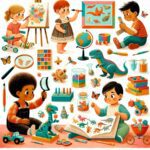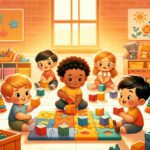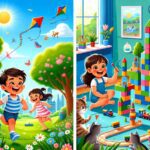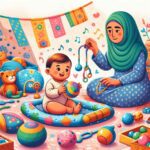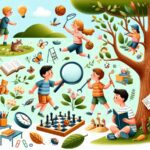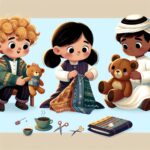Fostering creativity and imagination in toddlers is not just about keeping them entertained; it’s about laying the foundation for their cognitive development, problem-solving skills, and emotional resilience. This journey into the imaginative minds of toddlers requires parents and caregivers to play an active role, providing the tools and environment conducive to creative exploration.
The Importance of Creative Play in Early Development
Creative play is not merely a pastime for toddlers; it’s a vital aspect of their growth and development. It helps them make sense of the world around them, develop language skills, and manage their emotions. Through activities that foster creativity and imagination in toddlers, they learn to express themselves and interact with others in innovative ways.
According to studies, early engagement in creative activities supports cognitive development and enhances the ability to solve complex problems later in life. By encouraging your toddler’s imagination, you’re not just playing—you’re preparing them for a successful future.
Fostering Creativity and Imagination in Toddlers
Fostering creativity and imagination in toddlers can be both fun and educational. It’s about more than just handing them crayons and paper; it’s about engaging with them in a way that sparks their curiosity and encourages them to explore. Here are some practical ways to foster creativity and imagination in your little one:
- Introduce open-ended toys that can be used in multiple ways, such as blocks or play dough. These encourage imaginative play and problem-solving.
- Set up a dedicated creative space where they feel free to experiment with different materials without fear of making a mess.
- Engage in role-playing games that allow them to explore different characters and scenarios, enhancing their storytelling skills.
- Incorporate art projects that focus on the process rather than the outcome, fostering a sense of exploration and creativity.
- Encourage outdoor play, which has been shown to stimulate imagination and promote physical well-being.
- Read together regularly, and discuss the stories to develop their understanding and narrative skills.
For more insights on activities to boost imagination, consider exploring the role of outdoor play in physical and cognitive development and building a reading routine for language and emotional development.
Challenges and Solutions in Promoting Creativity
While the benefits of fostering creativity and imagination in toddlers are clear, parents often face challenges in this endeavor. Limited time, resources, or ideas can hinder the creative process. However, overcoming these obstacles can be simpler than it appears.
One effective strategy is to integrate creative activities into your daily routine. This doesn’t have to be complex; even small changes can make a big difference. Turning everyday situations into imaginative play scenarios or using household items as tools for exploration can provide endless opportunities for creativity.
Additionally, leveraging community resources such as local libraries, parks, and museums can offer new experiences and inspiration for both you and your toddler. Many of these institutions offer programs specifically designed to foster creativity and learning in young children.
Remember, fostering creativity and imagination in toddlers is a journey, not a destination. It’s about nurturing their innate curiosity and providing them with the tools to explore the world in their own unique way. By embracing this approach, you’re not only enriching their childhood but also setting them up for a lifetime of creative thinking and innovation.
For more information on supporting your child’s development, consider reading about encouraging self-feeding skills in infants and integrating music into your baby’s daily routine for cognitive benefits.


